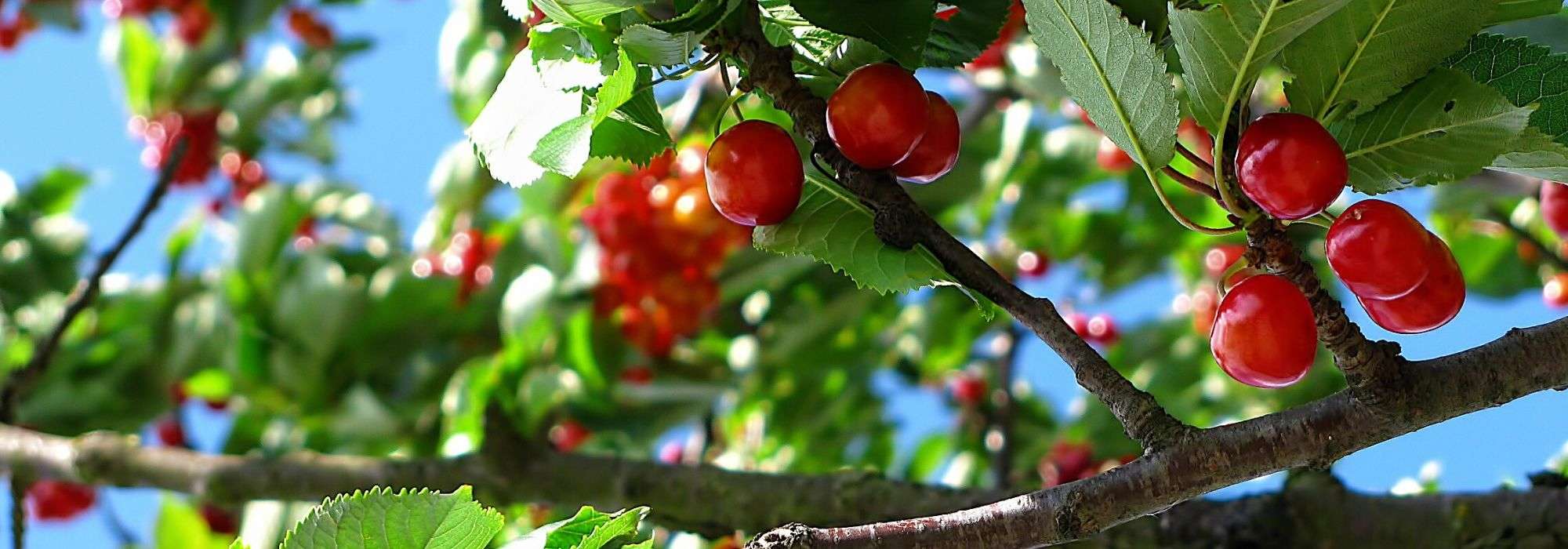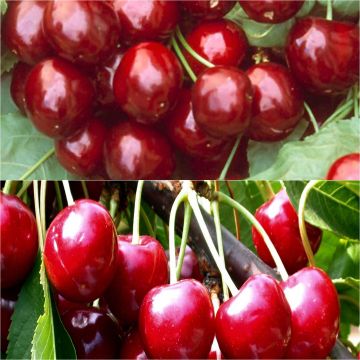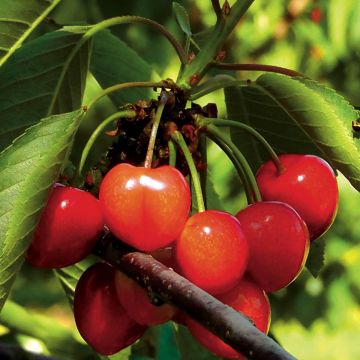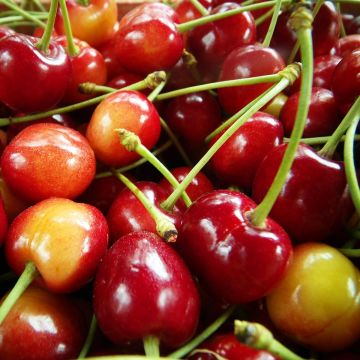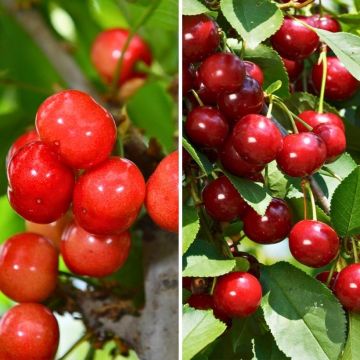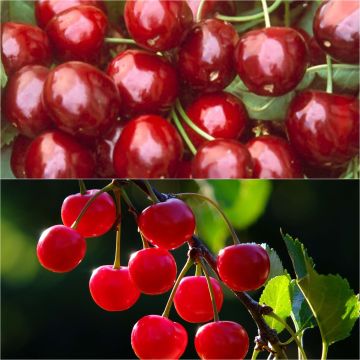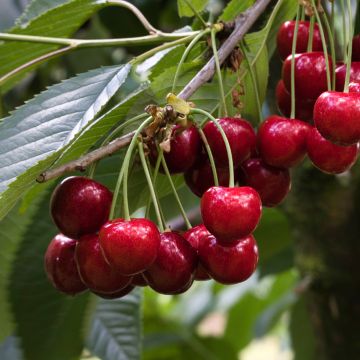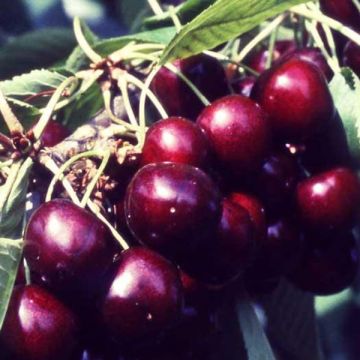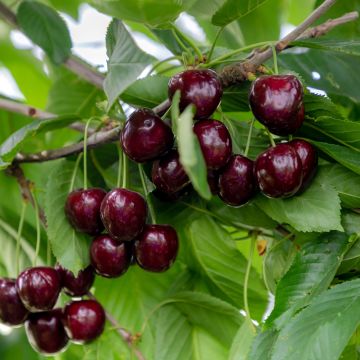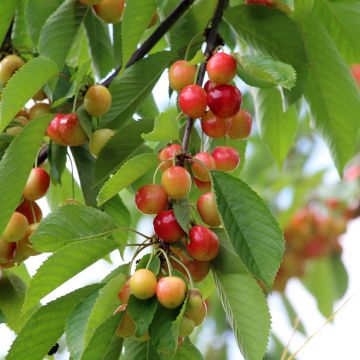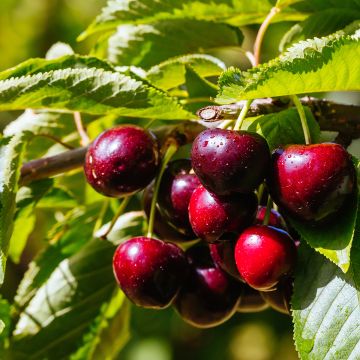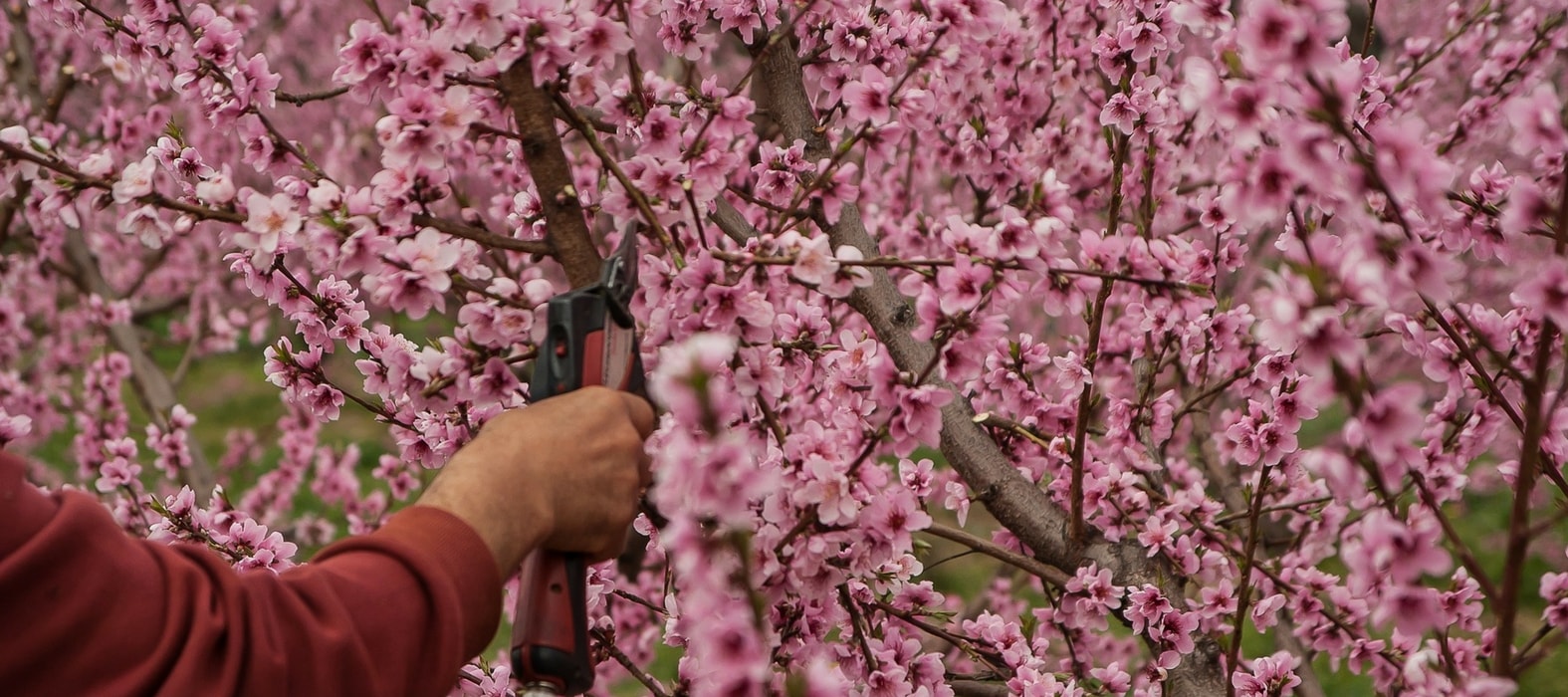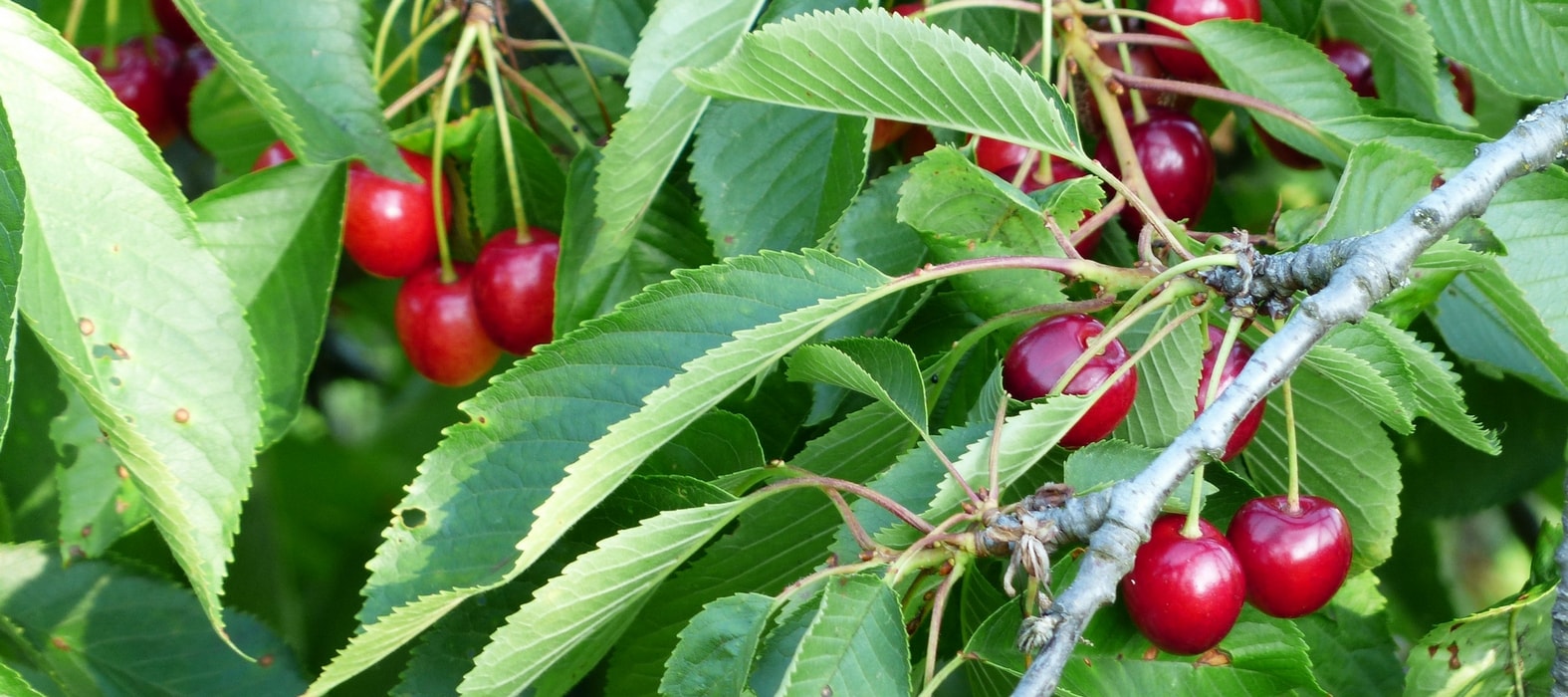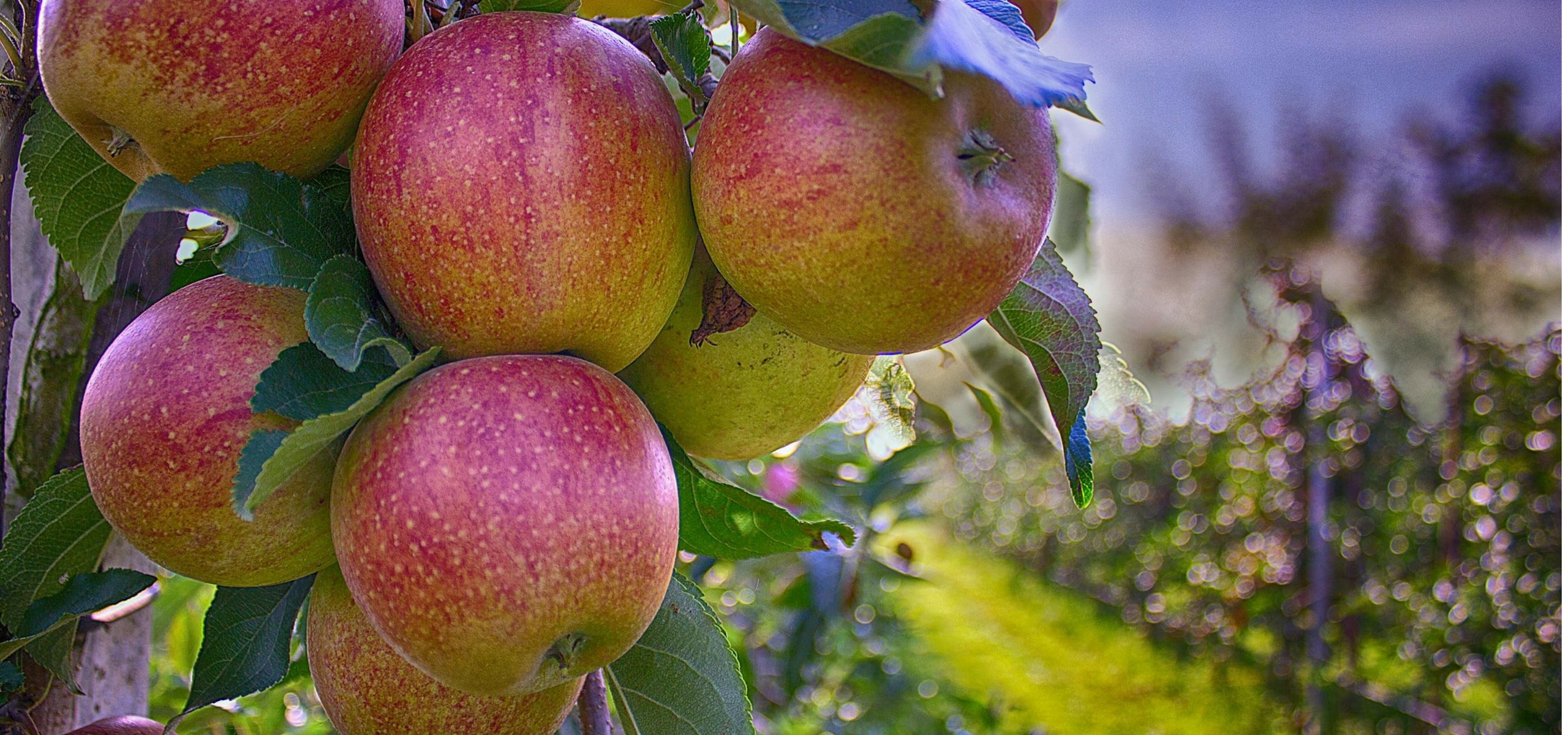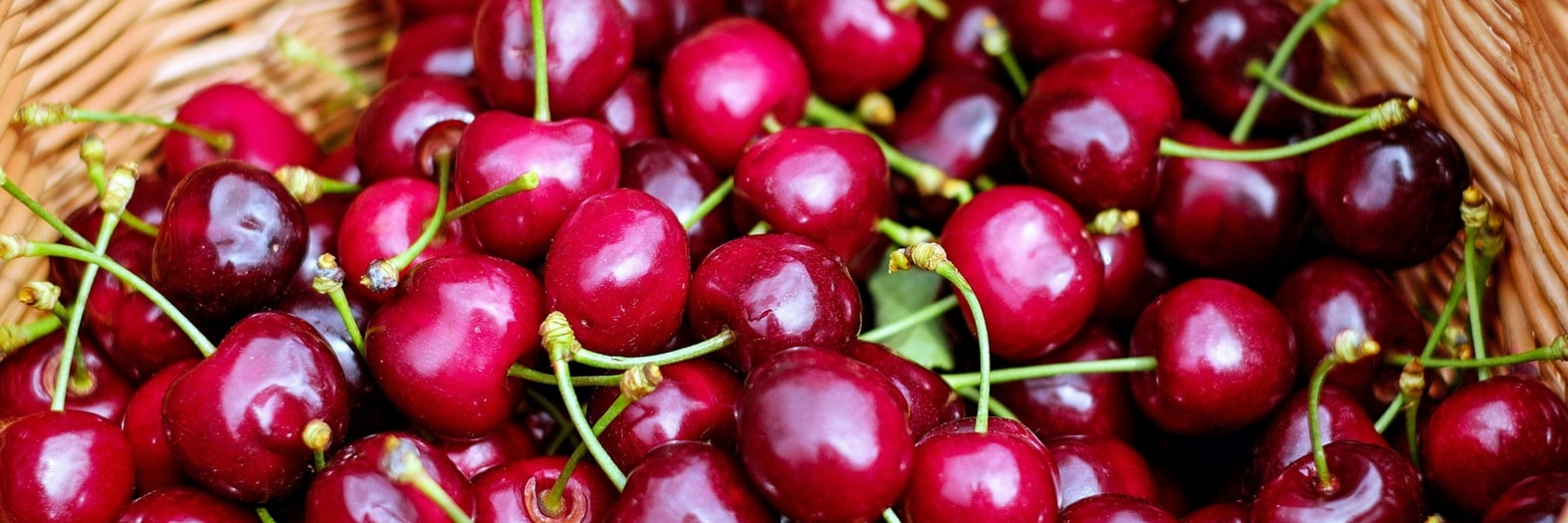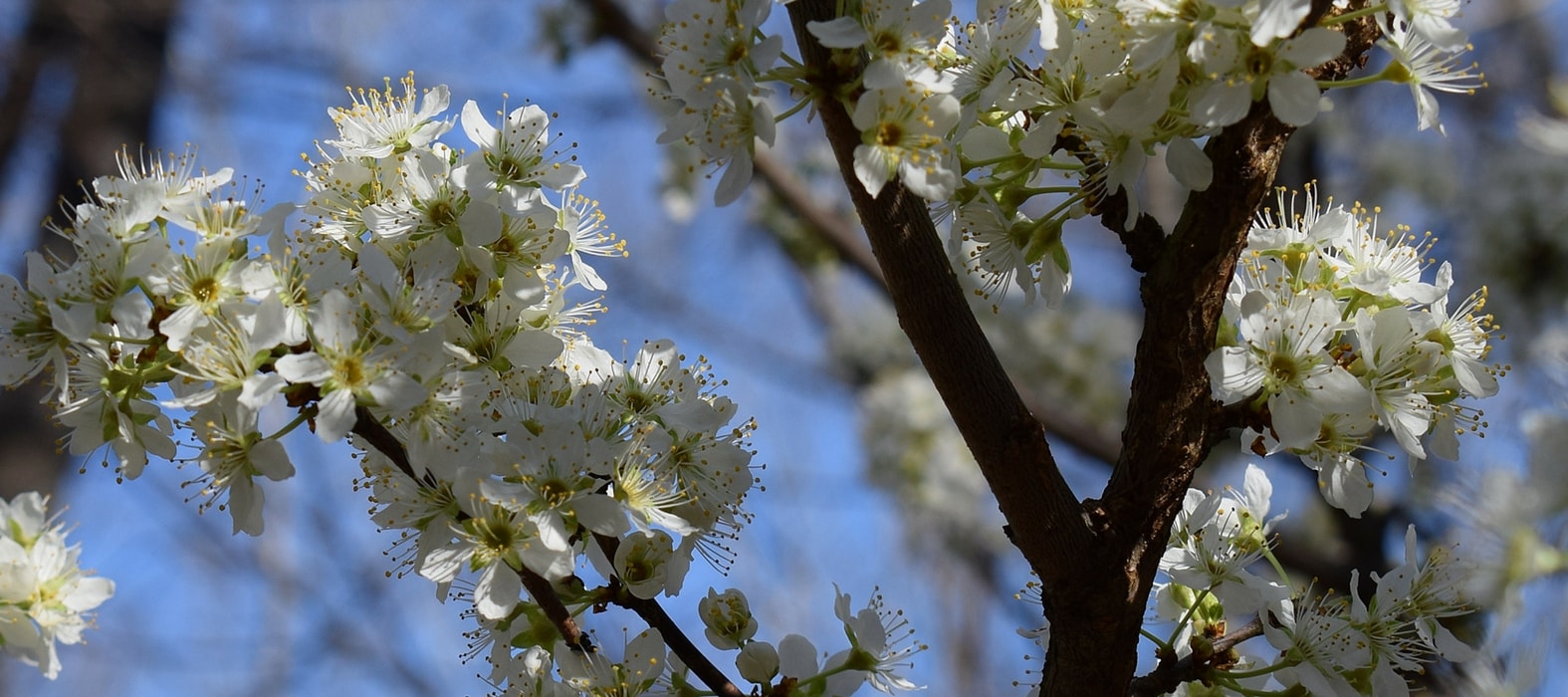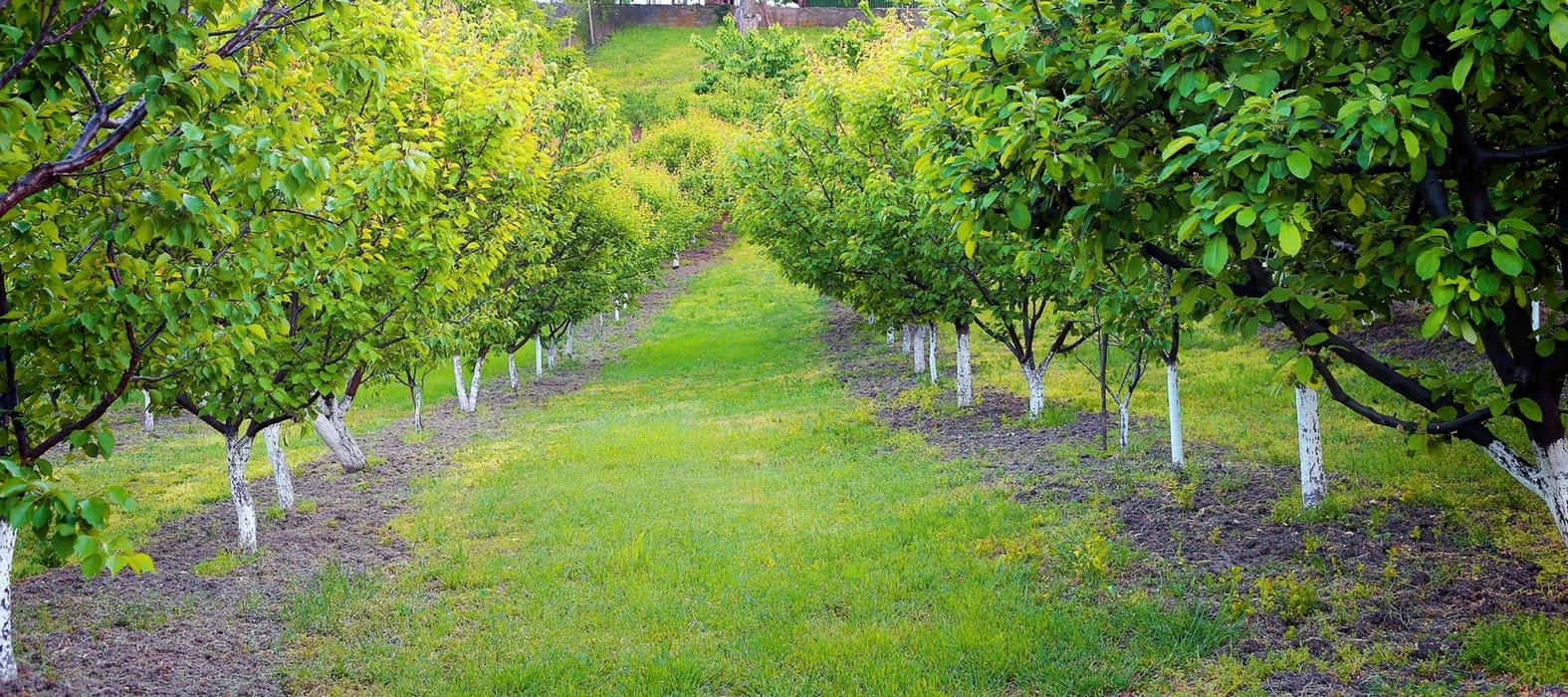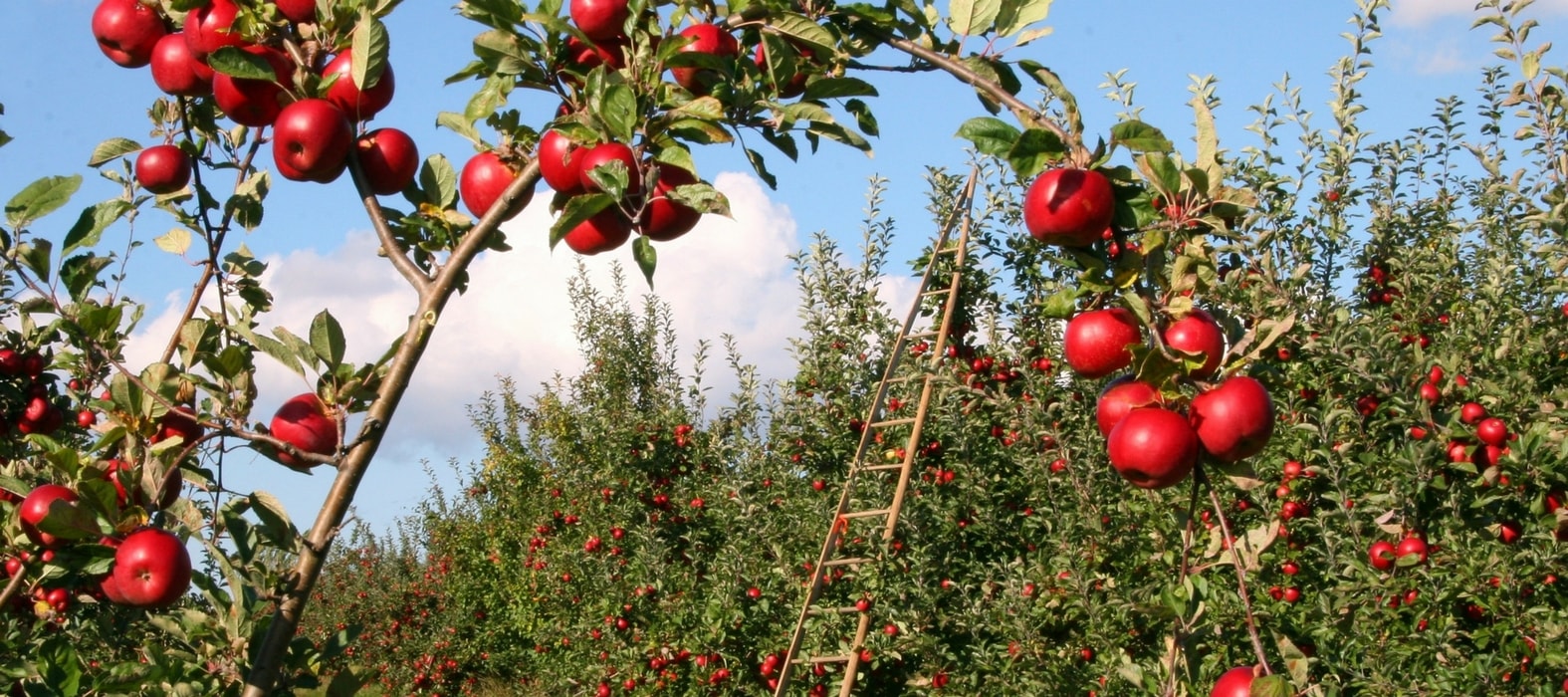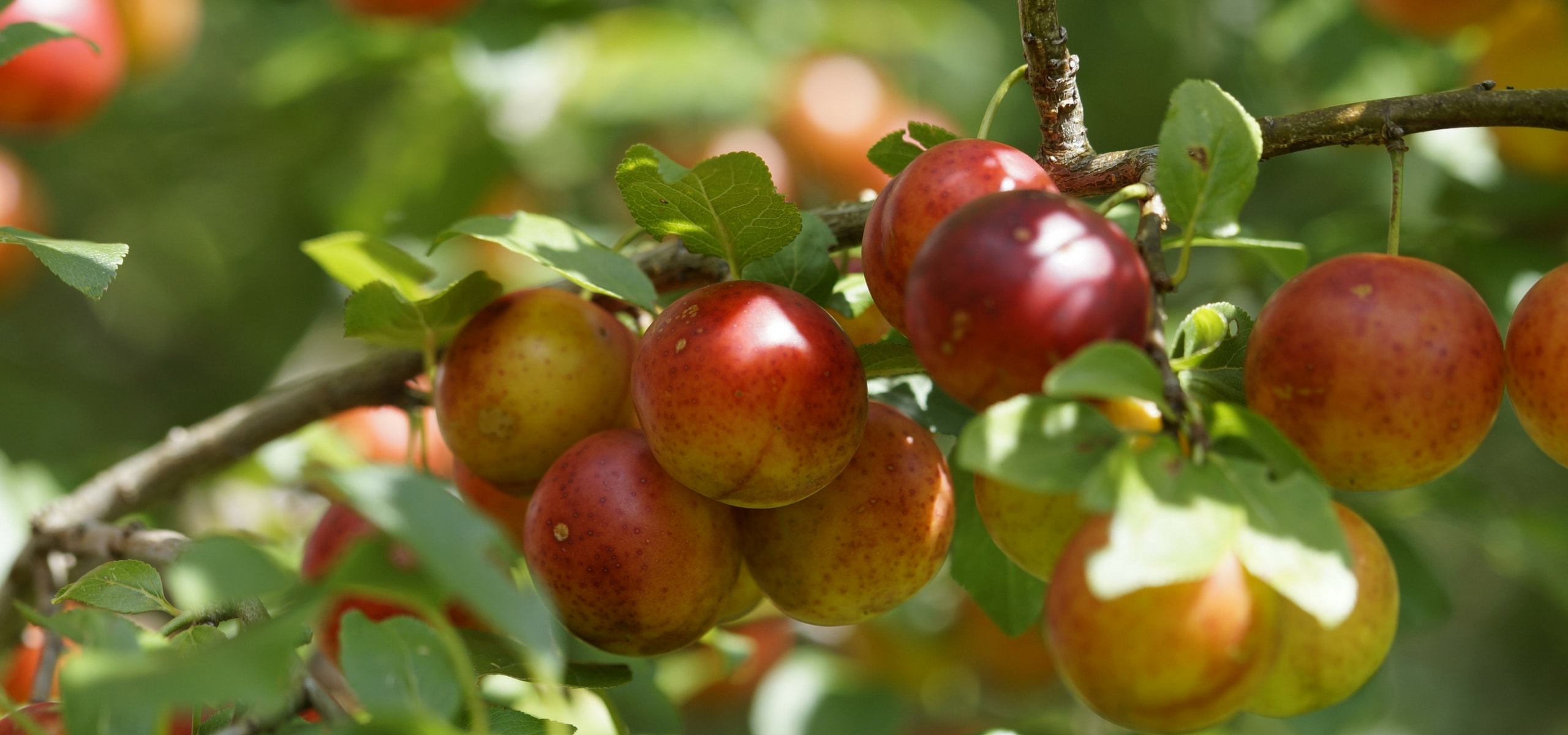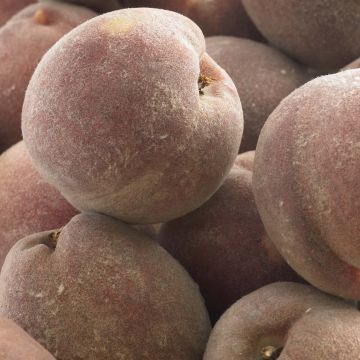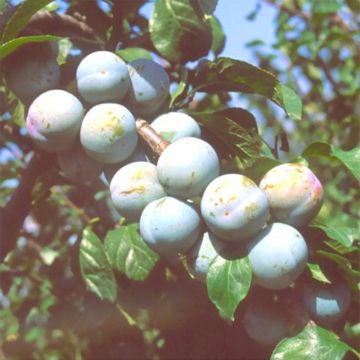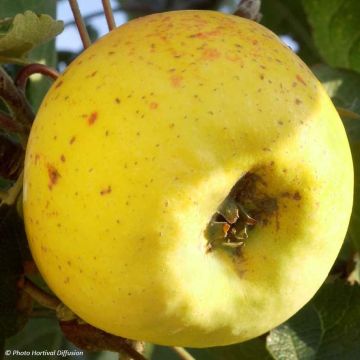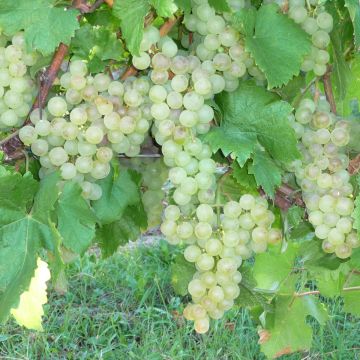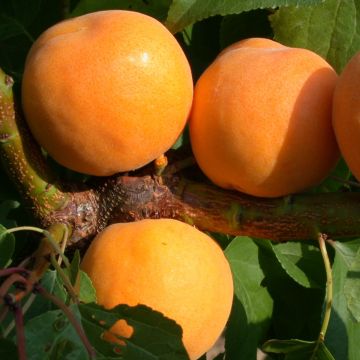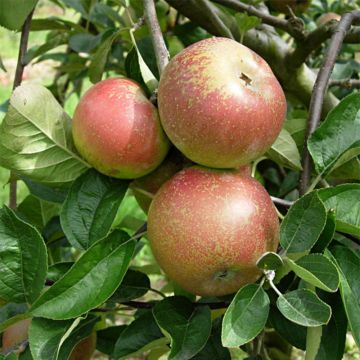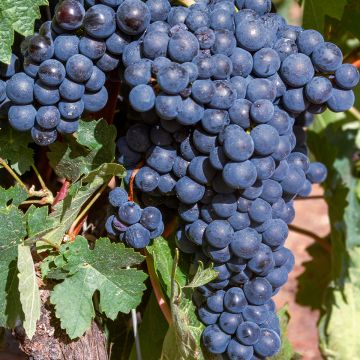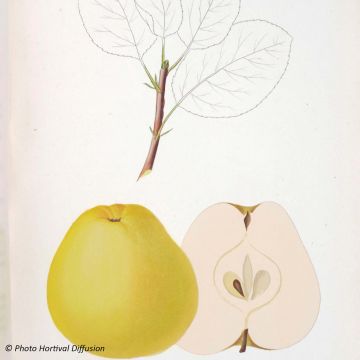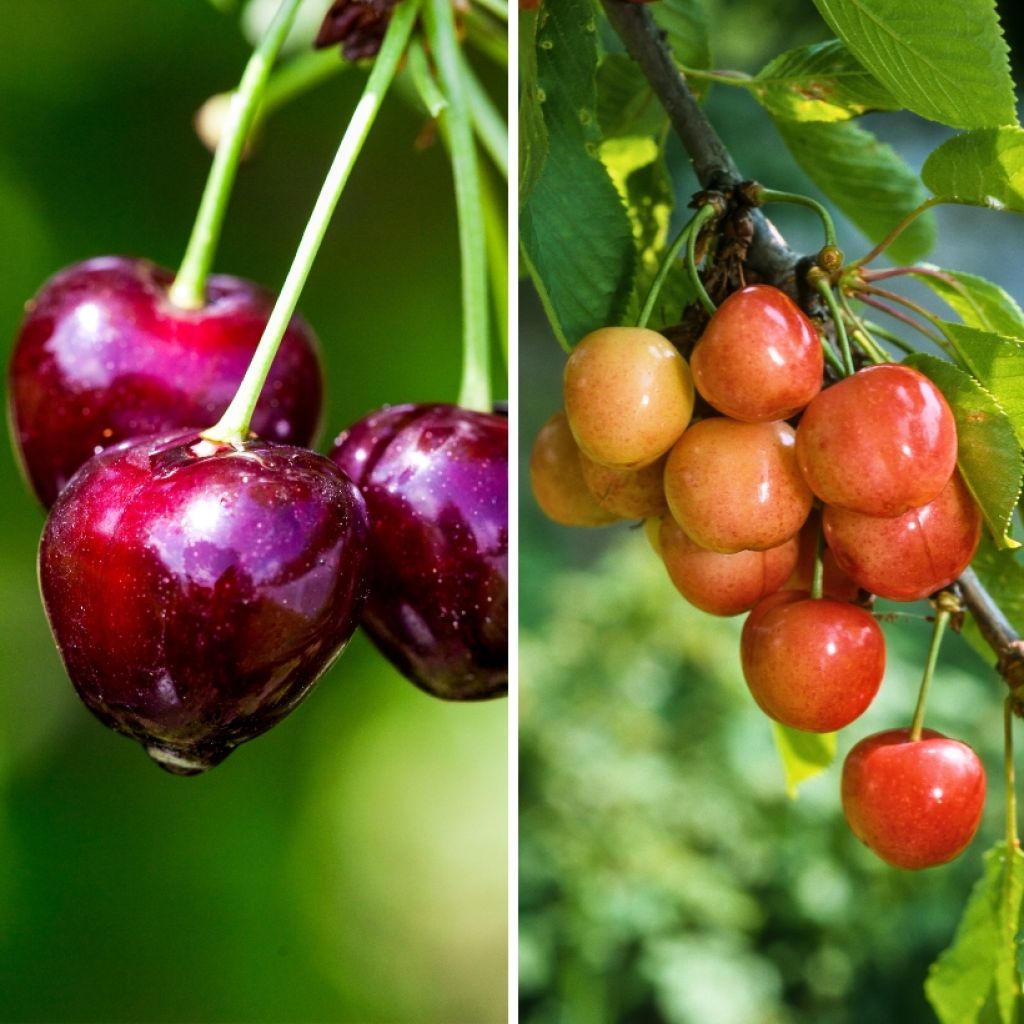

Prunus avium Bigarreau - Hedelfingen and Napoleon grafted on the same rootstock.
Prunus avium Bigarreau - Hedelfingen and Napoleon grafted on the same rootstock.
Prunus cerasus Bigarreau Hedelfingen
Wild Cherry,Sweet Cherry, Bird Cherry
Special offer!
Receive a €20 voucher for any order over €90 (excluding delivery costs, credit notes, and plastic-free options)!
1- Add your favorite plants to your cart.
2- Once you have reached €90, confirm your order (you can even choose the delivery date!).
3- As soon as your order is shipped, you will receive an email containing your voucher code, valid for 3 months (90 days).
Your voucher is unique and can only be used once, for any order with a minimum value of €20, excluding delivery costs.
Can be combined with other current offers, non-divisible and non-refundable.
Home or relay delivery (depending on size and destination)
Schedule delivery date,
and select date in basket
This plant carries a 6 months recovery warranty
More information
We guarantee the quality of our plants for a full growing cycle, and will replace at our expense any plant that fails to recover under normal climatic and planting conditions.
Description
Prunus avium Bigarreau Hedelfingen and Bigarreau Napoleon form a competitive duo to provide a harvest that will span from early June to late July. With complementary flowering, these two self-sterile varieties grafted on the same rootstock, pollinate each other to offer abundant fruiting on a single tree. Hedelfingen is large and dark red, an excellent tasty and crunchy cherry, while Napoleon, recognisable by its red and yellow skin, is more suitable for processing. This very ornamental cherry tree offers intense flowering at the beginning of spring, then its tender green foliage provides shade in the summer and ends with beautiful autumn colours. Its excellent cold resistance and adaptation to all types of soils, except for clayey ones, allow the cherry tree to be planted in all regions. It can be planted on a lawn, at the back of a flower bed, in an orchard, or as part of a fruit hedge.
This tree combines two grafts:
- A graft of Bigarreau Hedelfingen Cherry: a very productive, late variety producing slightly conical fruits with firm and juicy red flesh, and shiny dark red skin. These cherries resist bursting. Their red flesh is firm and juicy. Harvest from late June to the end of July. The tree reaches about 6 metres in all directions.
- A graft of Bigarreau Napoleon Cherry: a vigorous variety, producing heart-shaped fruits with white and juicy flesh, and yellow skin tinged with red. They attract few birds. Flowering starts at the end of March and harvesting begins in early June. These cherries are excellent when prepared in syrup, brandy, or in a clafoutis, for example.
Prunus avium belongs to the Rosaceae family, like the Sour Cherry (Prunus cerasus). Also known as Wild Cherry or Bird Cherry, it is native to Europe, Western Asia, and North Africa, and has been present in Europe since the Neolithic period (Polished Stone Age).
The cherry tree is a vigorous tree, with a semi-erect silhouette that spreads with age, reaching approximately 5 to 6 metres in height and 3 to 5 metres in width when fully grown, producing numerous branches. The reddish wood characterises it as a cherry tree. Its habit is suitable for free forms on standards or half-standards and low goblet forms. The deciduous foliage is composed of large, 6 to 8 cm long, alternate, obovate, irregularly toothed, shiny green leaves, taking on autumnal brown-orange hues. The semi-late flowering occurs between late March and mid-April, before the appearance of the leaves, which can expose it to late spring frosts. The pure white, single, 2 to 3 cm diameter flowers are grouped in clusters. They can be destroyed by frost from -2 to -3°C, so it is recommended to plant cherry trees in sheltered locations, facing west and protected from cold winds in regions that experience late frosts. Nevertheless, the very abundant flowering often leads to satisfactory fruiting. It is a remarkably decorative flowering in spring and particularly rich in nectar. It is a hardy tree that can withstand temperatures around -20°C. Cherry trees are self-sterile or self-incompatible, the flowers cannot fertilise themselves. That is why the presence of these two varieties, close to each other, will allow for cross-pollination and increase the number of fruits.
These two Bigarreau cherry trees offer a harvest that can be more or less abundant depending on the year and present an alternation phenomenon, allowing the tree to replenish its reserves. With fairly rapid fruiting, around 3 to 4 years, fruit production becomes optimal after 6 to 7 years. An adult cherry tree (between 10 and 20 years old) produces an average of 25 to 50 kilograms of fruit per year. The fruit is attached to the branch by a relatively short, 3 to 4 cm long stalk. Harvesting begins in early June with Bigarreau Napoleon and continues until the end of July with Bigarreau Hedelfingen. It is important to only pick the fruits when they are ripe, as they do not ripen further, and with their stems to ensure good preservation. Cherries are quite fragile, so harvest carefully with a picking pole or manually with a ladder.
These very juicy and very sweet cherries are delicious to eat raw. In cooking, they reveal all their flavours in the making of clafoutis, cakes, crumbles or pies, fruit salads, and as an accompaniment to savoury dishes with white meats (turkey, chicken, veal, duck, etc.). They are also perfect for making jams, preserved in syrup, or canned. Their content of vitamins A, C, and E, phenolic antioxidants, calcium, and copper, with a significant contribution of iron and their richness in trace elements and fibres, make cherries a healthy choice. The fruits can only be stored for a few days in a cool place or in the refrigerator. They can also be frozen once washed, dried, stemmed, and pitted.
Prunus avium Bigarreau - Hedelfingen and Napoleon grafted on the same rootstock. in pictures
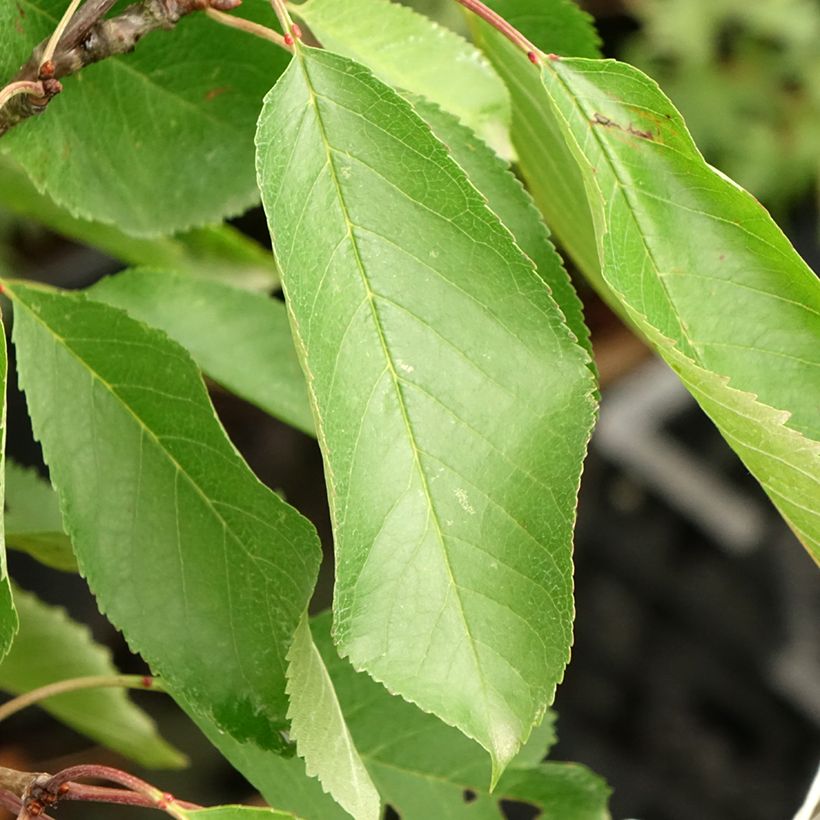

Plant habit
Fruit
Flowering
Foliage
Botanical data
Prunus
cerasus
Bigarreau Hedelfingen
Rosaceae
Wild Cherry,Sweet Cherry, Bird Cherry
Cultivar or hybrid
Other Cherry trees
View all →Planting and care
The Bigarreau Cherry tree grows in all types of soil, acidic or chalky. It appreciates moist, light soils and dislikes heavy and clayey soils. Choose a sunny exposure. To limit the risks of late frost on the flowers, plant the Cherry tree in a sheltered position, facing west and protected from cold winds in regions that experience spring frosts. Planting is best done in autumn or in winter, outside the freezing period. If you plant several trees, space them 7 to 10 m apart for "standard" cherry trees, 5 to 7 m apart for "half-standard" cherry trees, and 4 to 5 m apart for bush and pyramid forms.
Loosen the soil deeply, remove stones and weeds. Add some sand to improve drainage. Dig a hole 4 to 5 times the volume of the root ball. Make sure to separate the subsoil from the topsoil. Mix crushed horn or well-rotted compost or potting soil with the subsoil and pour this mixture into the planting hole. Install a stake. Place the root ball, cover with the topsoil and tamp down well. Water generously (about 10 litres). Position your tie system, crossing it in a figure of 8, so that the trunk and the stake do not rub against each other.
The cherry tree can be subject to various diseases and pests. Against grey rot (velvety rot on fruits) and moniliosis (wilting of flowers and rotting of fruits on the tree), remove and burn the affected parts curatively, and spray Bordeaux mixture or decoctions of horsetail or garlic preventively, at the beginning of spring and in autumn. Against bacterial canker (wilting of flower clusters, brown spots, deformation of the bark), spray Bordeaux mixture. As for pests, the cherry fruit fly or fruit worm can be controlled preventively by installing yellow cardboard discs covered with glue in spring, pheromone traps (trapping male insects), or a Drosophila trap, easy to make from a plastic bottle. In case of black aphid attack, spray a mixture of water and black soap or water and vegetable oil.
Once the cherry tree is well established, watering is not necessary, except in high heat. Mulch at the base to keep it moist in summer. Protect your harvest by installing a bird net, aluminium foil or old CDs. In a significant aphid attack, spray a mixture of water and black soap.
Planting period
Intended location
Care
Planting & care advice
This item has not been reviewed yet - be the first to leave a review about it.
Similar products
Haven't found what you were looking for?
Hardiness is the lowest winter temperature a plant can endure without suffering serious damage or even dying. However, hardiness is affected by location (a sheltered area, such as a patio), protection (winter cover) and soil type (hardiness is improved by well-drained soil).

Photo Sharing Terms & Conditions
In order to encourage gardeners to interact and share their experiences, Promesse de fleurs offers various media enabling content to be uploaded onto its Site - in particular via the ‘Photo sharing’ module.
The User agrees to refrain from:
- Posting any content that is illegal, prejudicial, insulting, racist, inciteful to hatred, revisionist, contrary to public decency, that infringes on privacy or on the privacy rights of third parties, in particular the publicity rights of persons and goods, intellectual property rights, or the right to privacy.
- Submitting content on behalf of a third party;
- Impersonate the identity of a third party and/or publish any personal information about a third party;
In general, the User undertakes to refrain from any unethical behaviour.
All Content (in particular text, comments, files, images, photos, videos, creative works, etc.), which may be subject to property or intellectual property rights, image or other private rights, shall remain the property of the User, subject to the limited rights granted by the terms of the licence granted by Promesse de fleurs as stated below. Users are at liberty to publish or not to publish such Content on the Site, notably via the ‘Photo Sharing’ facility, and accept that this Content shall be made public and freely accessible, notably on the Internet.
Users further acknowledge, undertake to have ,and guarantee that they hold all necessary rights and permissions to publish such material on the Site, in particular with regard to the legislation in force pertaining to any privacy, property, intellectual property, image, or contractual rights, or rights of any other nature. By publishing such Content on the Site, Users acknowledge accepting full liability as publishers of the Content within the meaning of the law, and grant Promesse de fleurs, free of charge, an inclusive, worldwide licence for the said Content for the entire duration of its publication, including all reproduction, representation, up/downloading, displaying, performing, transmission, and storage rights.
Users also grant permission for their name to be linked to the Content and accept that this link may not always be made available.
By engaging in posting material, Users consent to their Content becoming automatically accessible on the Internet, in particular on other sites and/or blogs and/or web pages of the Promesse de fleurs site, including in particular social pages and the Promesse de fleurs catalogue.
Users may secure the removal of entrusted content free of charge by issuing a simple request via our contact form.
The flowering period indicated on our website applies to countries and regions located in USDA zone 8 (France, the United Kingdom, Ireland, the Netherlands, etc.)
It will vary according to where you live:
- In zones 9 to 10 (Italy, Spain, Greece, etc.), flowering will occur about 2 to 4 weeks earlier.
- In zones 6 to 7 (Germany, Poland, Slovenia, and lower mountainous regions), flowering will be delayed by 2 to 3 weeks.
- In zone 5 (Central Europe, Scandinavia), blooming will be delayed by 3 to 5 weeks.
In temperate climates, pruning of spring-flowering shrubs (forsythia, spireas, etc.) should be done just after flowering.
Pruning of summer-flowering shrubs (Indian Lilac, Perovskia, etc.) can be done in winter or spring.
In cold regions as well as with frost-sensitive plants, avoid pruning too early when severe frosts may still occur.
The planting period indicated on our website applies to countries and regions located in USDA zone 8 (France, United Kingdom, Ireland, Netherlands).
It will vary according to where you live:
- In Mediterranean zones (Marseille, Madrid, Milan, etc.), autumn and winter are the best planting periods.
- In continental zones (Strasbourg, Munich, Vienna, etc.), delay planting by 2 to 3 weeks in spring and bring it forward by 2 to 4 weeks in autumn.
- In mountainous regions (the Alps, Pyrenees, Carpathians, etc.), it is best to plant in late spring (May-June) or late summer (August-September).
The harvesting period indicated on our website applies to countries and regions in USDA zone 8 (France, England, Ireland, the Netherlands).
In colder areas (Scandinavia, Poland, Austria...) fruit and vegetable harvests are likely to be delayed by 3-4 weeks.
In warmer areas (Italy, Spain, Greece, etc.), harvesting will probably take place earlier, depending on weather conditions.
The sowing periods indicated on our website apply to countries and regions within USDA Zone 8 (France, UK, Ireland, Netherlands).
In colder areas (Scandinavia, Poland, Austria...), delay any outdoor sowing by 3-4 weeks, or sow under glass.
In warmer climes (Italy, Spain, Greece, etc.), bring outdoor sowing forward by a few weeks.






























